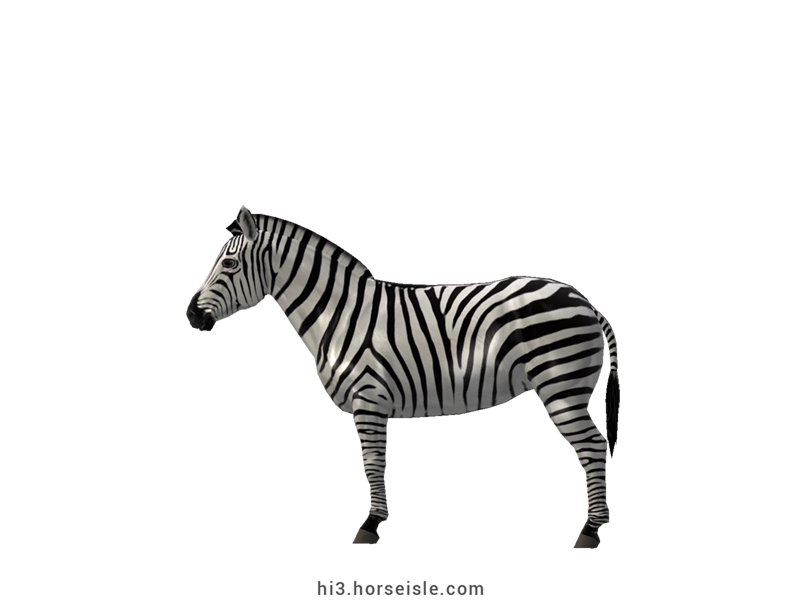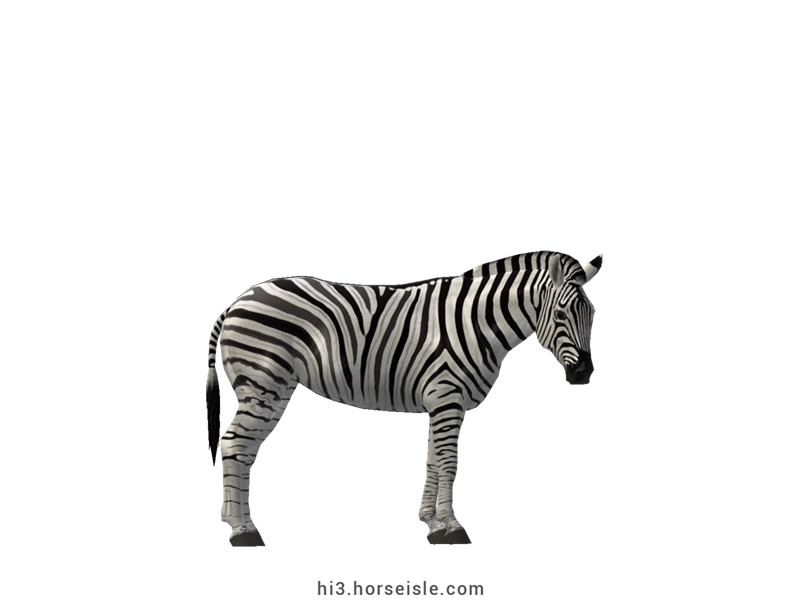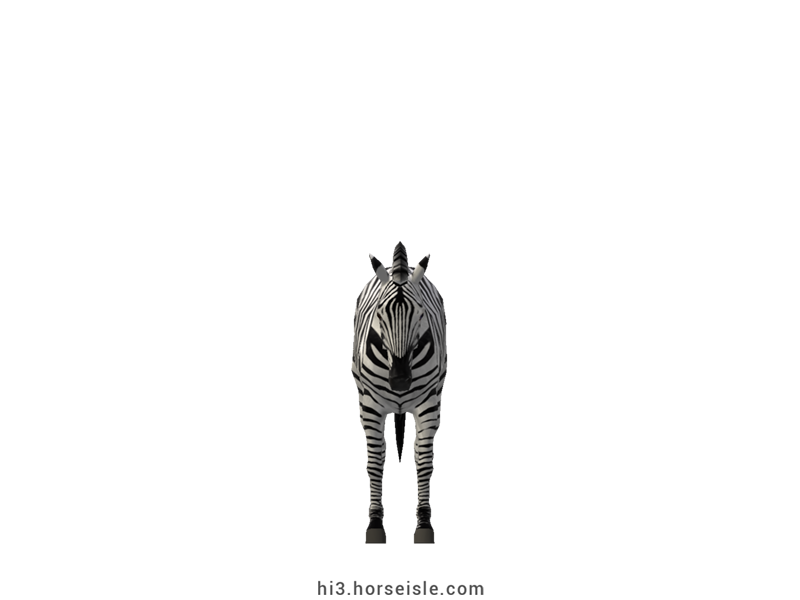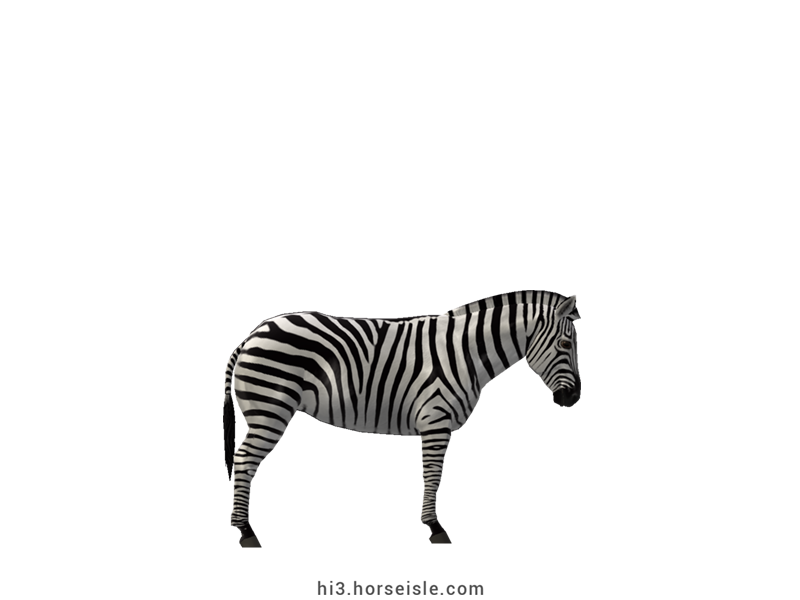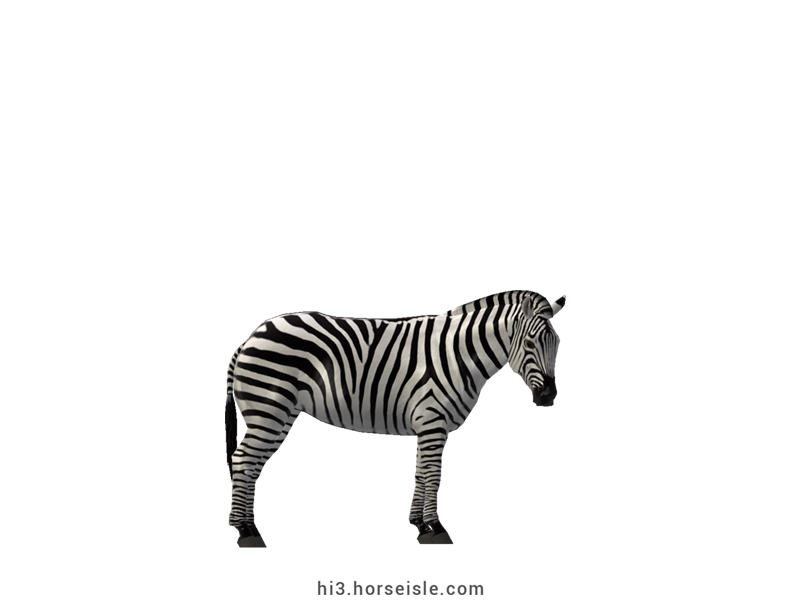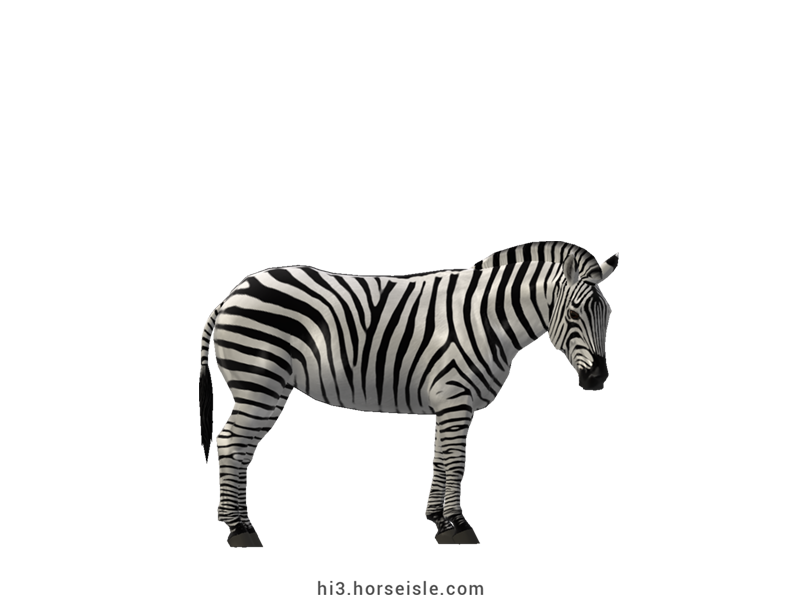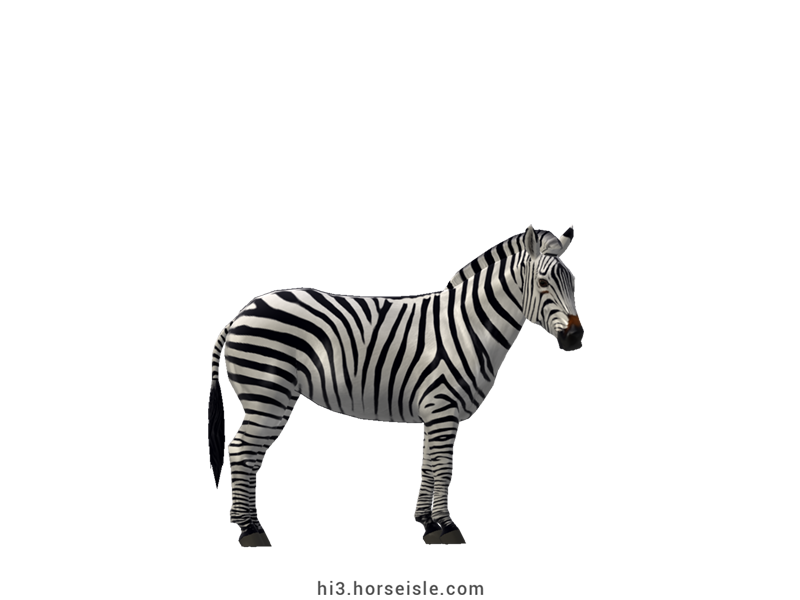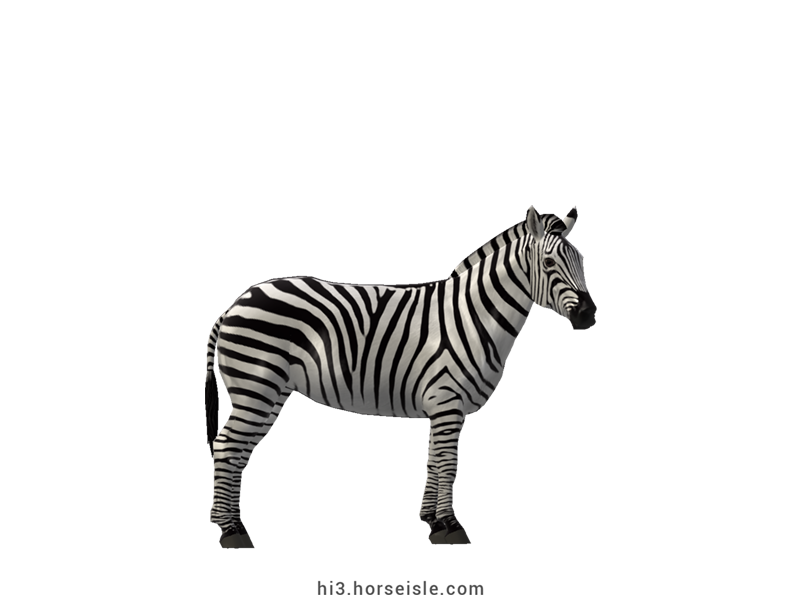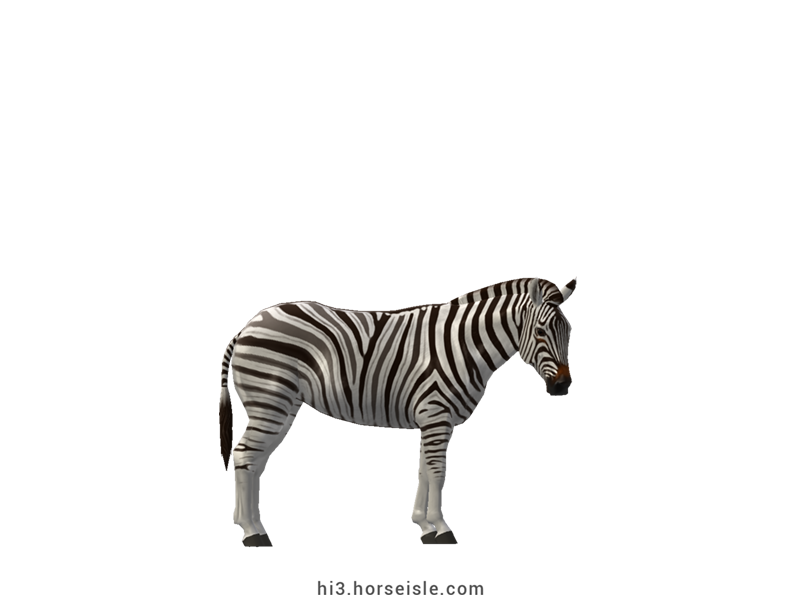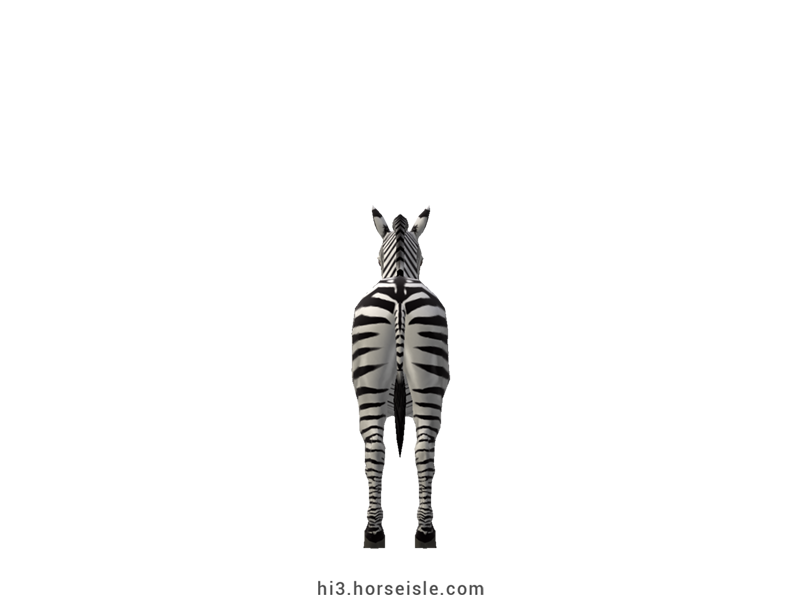Our Massive Real World Equine Reference!
[ INDEX ] Equine Type: Zebra Breed: Plains Zebra [ PREV ] [ NEXT ]
Lifestyle and Habitat:
Africa's savannas and grasslands are famous for the herds of herbivores that roam in them as far as the eye can see. Hundreds of thousands of herbivores of various species roam together for increased security: more eyes means a higher chance of spotting a predator in time and not being picked as a target. Among these herds, one will often find a large herd of Plains zebras.
Each large zebra herd is made of many little sub-groups of the following two types: the first is harems, consisting of mares and their foals who belong to one stallion, and the second is small groups of bachelor stallions. Individual bachelors from these groups can challenge stallions who own harems in an attempt to take over the harem, or, alternatively, can try and convince mares to leave their current harem and join them.
Plains zebras depend on a constant water supply for their survival, and as such they will often roam in locations that have lakes or rivers in them. During dry seasons, zebras will migrate to wetter regions in a journey that can be as long as 500km. In fact, of all African mammals, including other species of zebras, the Plains zebra is the one who migrates over the longest distance.
Plains Zebras Today:
While many people might perceive the Plains zebra as a common animal, in reality, the numbers of Plains zebra are declining and the species is near-threatened.
Migrating from one location to another is one of the reasons behind this decline. While some areas in Africa are protected by laws that forbid hunting of zebras, the routes between such areas are not always as safe. Therefore, during migration season, Plains zebras are susceptible to being hunted by humans for their hides and meat.
Another reason for the gradual disappearance of Plains zebras is habitat loss. The raising of livestock in the zebra's natural habitat means that zebras have less food and water available for them.
Today, conservation efforts are being made to prevent the extinction of this unique animal. Among them are the promotion of sustainable farming of livestock, and the formation of protected corridors that link one protected range to another, thus ensuring safe migration routes.
Subspecies:
All Plains zebras, regardless of their type, roam in south and east Africa. That said, there are five existing subspecies of Plains zebras (a sixth one, the Equus quagga quagga, went extinct in the 19th century,) each is slightly genetically unique in its own way.
Of these subspecies, one, the Equus quagga burchellii (Burchell's zebra), is found in Horse Isle.
Coat Pattern and Colors:
Similarly to the two other zebra species, the Grevy and Mountain zebras, each individual Plains zebra has a unique stripes pattern that differ it from other zebras. That said, the overall pattern of the coat is similar among all Plains zebras, and vastly different from the patterns of Grevy and Mountain zebras.
Plains zebras have the least amount of stripes of all zebra species, and their barrel stripes (the stripes that run on the sides of their barrel) are also the thickest. In addition, these stripes run all the way from the zebra's back to their abdomen, and this serves as the best way to tell Plains zebra from Grevy and Mountain zebras, both of which have completely white abdomens except for a single line that runs along its bottom.
Another unique characteristic is the muzzle of Plains zebras which can be black, while in other zebra species it is brown. That said, in some Plains zebras the muzzle can be brown.
Plains zebras usually have stripes on their legs, although one subspecies, the Burchell's zebra, can have white legs. Zebras of this subspecies also show shadow stripes and scrambled stripes (see 'Burchell's Zebra' for more information.)
Normally, Plains zebras are black with white stripes. In extremely rare cases, however, Plains zebras can be born with a partially-albino coat. When this happens, the coat will be beige or blonde with white stripes. In some cases, though not all, the eyes might be blue. In real zebras, this phenomenon is linked to excessive inbreeding, but not so in Horse Isle.
Performance metrics:
The following are the: range, average, (SD), and MOE of performance metrics of ordered Plains zebras in Horse Isle (not bred ones). In rare cases,
Speed: 13.3-15.9, 14.5 (0.7), 0.13.
Sprint: 41-64, 51 (6), 1.11.
Accel: 0.94-1.20, 1.06 (0.05), 0.01.
Decel: 0.82-0.98, 0.90 (0.03), 0.01.
Jump: 4.82-5.04, 4.94 (0.05), 0.01.
Pull: 0.92-1.88, 1.37 (0.24), 0.05.
Turning: 47.10-59.35, 53.23 (2.24), 0.44.
Reverse: 2.2-2.8, 2.5 (0.1), 0.03.
Stamina: 45.39-54.08, 49.18 (1.99), 0.39.
Reaction: 0.63-0.74, 0.68 (0.03), 0.01.
Height:
In Horse Isle, Plains zebras stand between 10.2hh and 15hh.
[ INDEX ] [ PREV ] [ NEXT ]

